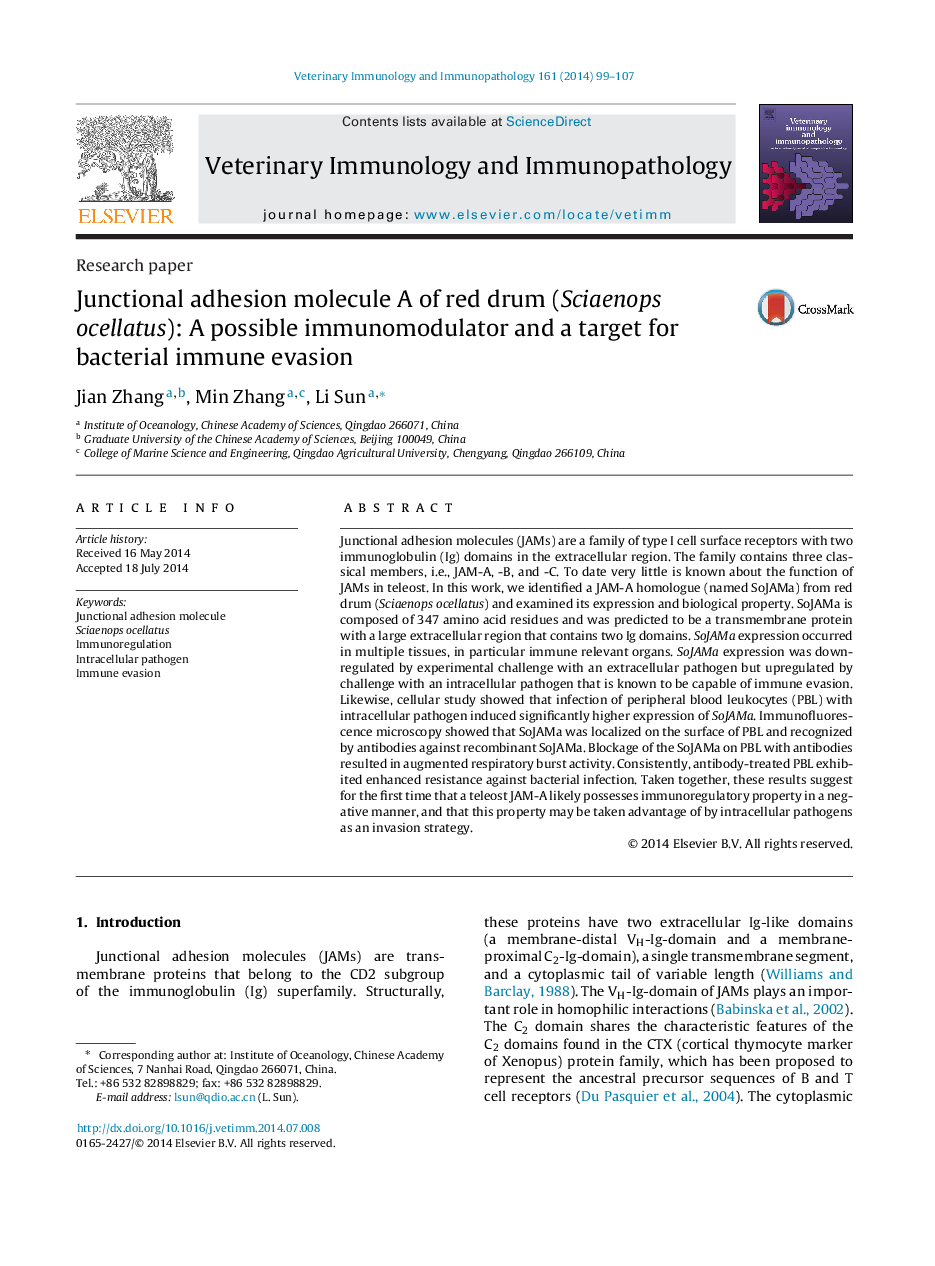| Article ID | Journal | Published Year | Pages | File Type |
|---|---|---|---|---|
| 5796731 | Veterinary Immunology and Immunopathology | 2014 | 9 Pages |
Junctional adhesion molecules (JAMs) are a family of type I cell surface receptors with two immunoglobulin (Ig) domains in the extracellular region. The family contains three classical members, i.e., JAM-A, -B, and -C. To date very little is known about the function of JAMs in teleost. In this work, we identified a JAM-A homologue (named SoJAMa) from red drum (Sciaenops ocellatus) and examined its expression and biological property. SoJAMa is composed of 347 amino acid residues and was predicted to be a transmembrane protein with a large extracellular region that contains two Ig domains. SoJAMa expression occurred in multiple tissues, in particular immune relevant organs. SoJAMa expression was downregulated by experimental challenge with an extracellular pathogen but upregulated by challenge with an intracellular pathogen that is known to be capable of immune evasion. Likewise, cellular study showed that infection of peripheral blood leukocytes (PBL) with intracellular pathogen induced significantly higher expression of SoJAMa. Immunofluorescence microscopy showed that SoJAMa was localized on the surface of PBL and recognized by antibodies against recombinant SoJAMa. Blockage of the SoJAMa on PBL with antibodies resulted in augmented respiratory burst activity. Consistently, antibody-treated PBL exhibited enhanced resistance against bacterial infection. Taken together, these results suggest for the first time that a teleost JAM-A likely possesses immunoregulatory property in a negative manner, and that this property may be taken advantage of by intracellular pathogens as an invasion strategy.
